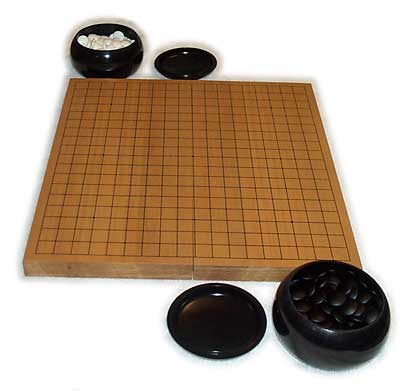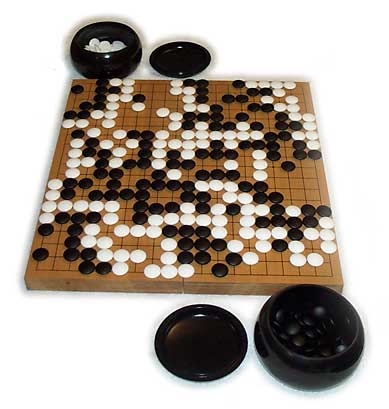Go is a board game played on a
grid, with pieces being placed at the intersections of grid lines, rather
than in the middle of them. Go boards have a number of peculiarities, including the
fact that the aspect ratio is approximately 0.91 (instead of the usual unity for
western games). This is done so that with perspective, the board appears square.
Another is that go pieces (called stones) are actually slightly larger than the spacing
on the board allows, thus requiring stones to be placed partially underneath one
another to fit, producing a state of mild disorder on a full board.
Go is played by players alternately placing stones on the board, with one player using white stones and the other black stones. There are several sets of rules (Japanese and Chinese) as to how play progresses and scoring is done, but the basic object is to surround as much "territory" as possible. When a group of one player's stones are completely surrounded the other player's (i.e., there are no holes and the stones of one color have stones of the other color adjacent to each possible location horizontally and vertically), the surrounded stones are "captured" by the other player. Go has a number of special terms to refer to specific board configurations, including "atari."
Sensei's Library provides a large collection of go resources, including extensive links to additional material.


The images above show an empty go board and a go board near the end of a game.
There are estimated to be about
possible positions on a
board (Beeler et al. 1972, Flammenkamp). The number of
-move go games are 1, 362, 130683, 47046242, ... (OEIS A007565).